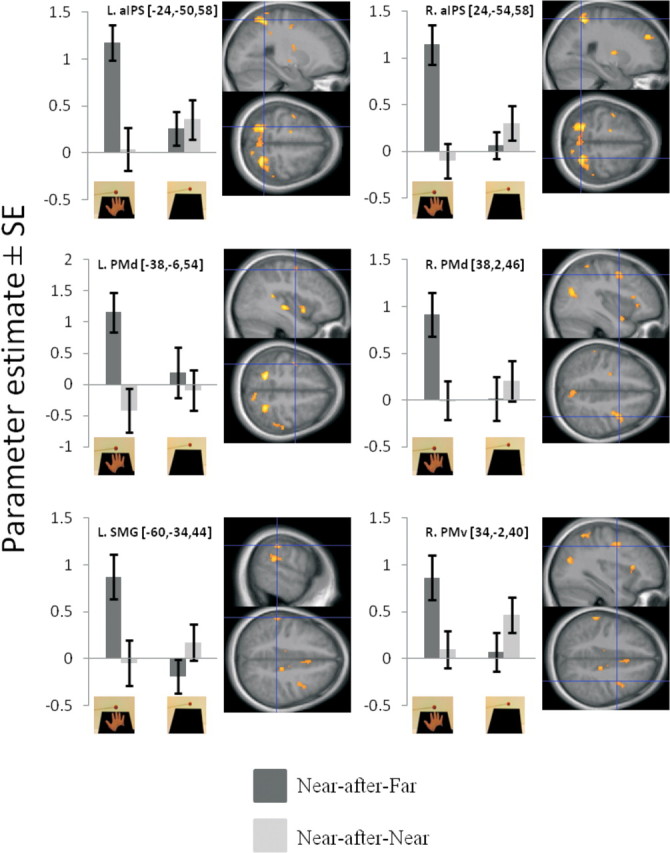Figure 4.

Key areas showing significant BOLD adaptation to near-hand stimuli, only when the arm is extended and placed on the table (second analysis approach; p < 0.05 corrected). The activation maps are derived from the contrast [(Near-after-Far vs Near-after-Near)HAND vs (Near-after-Far vs Near-after-Near)NO HAND]. Each plot corresponds to the parameter estimates for the Near-after-Far and the Near-after-Near conditions in the HAND (left) or NO HAND (right) runs (indicated by the pictures). Error bars represent SEM. The corresponding activation map is displayed on the sagittal and axial slices of the mean high-resolution structural scan from all participants. The significant peak of activations can be identified by the blue crosshairs; the threshold of the activation map was set at p < 0.001 uncorrected for display purposes.
